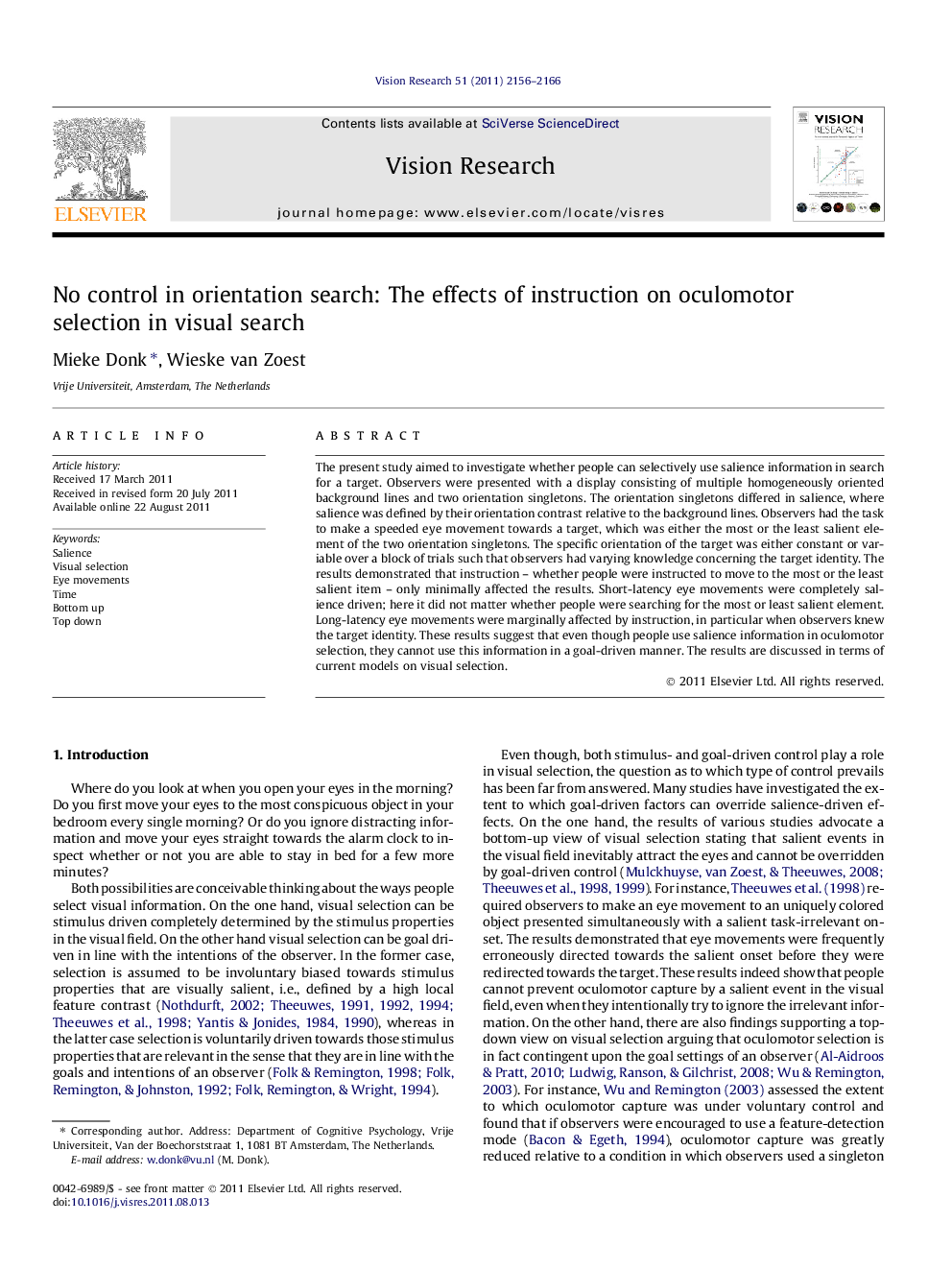| Article ID | Journal | Published Year | Pages | File Type |
|---|---|---|---|---|
| 4034209 | Vision Research | 2011 | 11 Pages |
The present study aimed to investigate whether people can selectively use salience information in search for a target. Observers were presented with a display consisting of multiple homogeneously oriented background lines and two orientation singletons. The orientation singletons differed in salience, where salience was defined by their orientation contrast relative to the background lines. Observers had the task to make a speeded eye movement towards a target, which was either the most or the least salient element of the two orientation singletons. The specific orientation of the target was either constant or variable over a block of trials such that observers had varying knowledge concerning the target identity. The results demonstrated that instruction – whether people were instructed to move to the most or the least salient item – only minimally affected the results. Short-latency eye movements were completely salience driven; here it did not matter whether people were searching for the most or least salient element. Long-latency eye movements were marginally affected by instruction, in particular when observers knew the target identity. These results suggest that even though people use salience information in oculomotor selection, they cannot use this information in a goal-driven manner. The results are discussed in terms of current models on visual selection.
► We examined whether people can freely use salience information in visual search. ► Observers had to make an eye movement towards a most or least salient element. ► Low-latency eye movements were completely salience driven. ► High-latency eye movements were not salience driven. ► We concluded that people cannot use salience information in a goal-driven manner.
